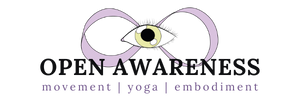23 Nov What Your Posture Says About You
I’ve been thinking a lot about posture lately, which makes sense because I teach people’s bodies.
I’ve not only been thinking about what people can do to help them strengthen their postural muscles, to “stand up straight,” but also about what their body postures might say about how they’re currently feeling and how we might be able to use yoga to shift those feelings.
So, how do our bodies show how we’re feeling?
Imagine how you or someone you know looks when they’re feeling really awful, bummed out, super low. What do you picture?
I imagine this person to look hunched over. Arms crossed. Slumped shoulders. Head hanging. Closed in on themselves. Maybe even lying in bed curled into a ball.
What about how they look when they just heard great news? Maybe they landed the gig or their team just won.
I imagine exuberance! Arms thrown into the air. Chest lifted. Chin up. Making themselves big and expansive. Maybe even jumping off the ground!
If how you’re feeling can change your body’s posture, can your body’s posture change how you’re feeling?
Body language researcher Amy Cuddy says yes.
Her research breaks it down into people doing high power poses or low power poses. In a nutshell, high power poses involve taking up space and low power poses involve shrinking down.
People who struck a high power pose for two minutes before going into an interview fared better in the interview than those who struck a low power pose.
Most interestingly, there were significant hormone level changes in these two groups. The high power posers showed an increase in testosterone (the dominance hormone) and a decrease in cortisol (the stress hormone). The low power posers showed a decrease in testosterone and an increase in cortisol.
This means that the high power posers showed up with more confidence and less stress than the low power posers!
What did they do differently?
They simply held a different body posture for two minutes before (not even during) the interview!
If you want to learn more about this, here’s Amy’s engaging 20-minute Ted Talk on the topic, including pictures of the different postures and more real-life examples of how to use power poses.
To me, these body posture research findings speak volumes to why yoga makes people feel better. During an asana practice, you move your body into a variety of different postures, many of them quite different from how you’d otherwise be holding or moving your body throughout your day.
Whether the yoga pose asks you to take up space or fold yourself smaller, each of the shapes have the potential to create physiological changes in your body that can (and do) bring about improvements in mood, self-esteem, and a sense of well-being. Let’s not forget about how practicing makes you stronger and more flexible, too!
Sure, sitting for a living can lead to slumped posture, simply by dent of iffy ergonomics and the required reach for the keyboard.
Could holding this posture for so much of the day also lead to feeling “low power” more often?
Could the way you hold your body be a part of the reason for an overarching mood?
If so, could working with your posture improve your mental health?
I’m here for yoga practice on Tuesday and Friday if you want to experiment.
I’m also happy to give you a quick posture assessment, if you so desire. Just shoot me an email or message me on IG or FB and let me know.
——
Sign up for the Open Awareness Yoga Newsletter
[mc4wp_form id=”1107″]
